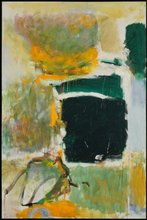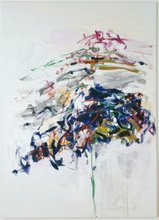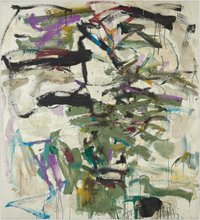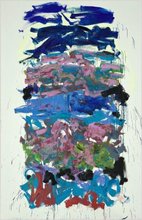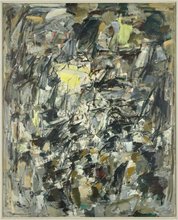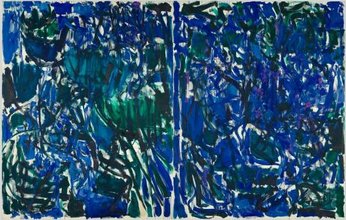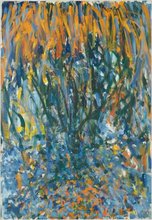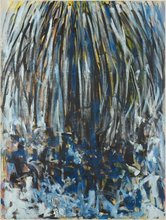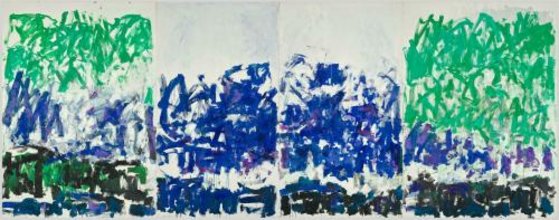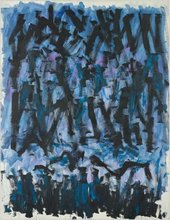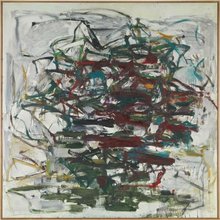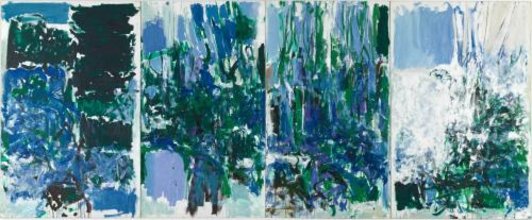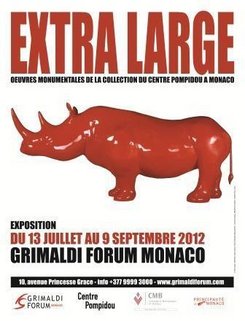Artist/personality
Joan Mitchell
Peintre

Joan Mitchell
Peintre
Nationalité américaine
Birth: 1925, Chicago (Illinois, États-Unis)
Death: 1992, Paris (France)
© Estate of Joan Mitchell
Biography
Over a career spanning nearly 40 years, Joan Mitchell invented a unique form of painting: abstract but inspired by her familiar landscapes, gestural and filled with light. She was part of the small circle of Abstract Expressionists, an artistic movement that emerged in the United States following World War II. She was also one of the few women painters to became famous during her own lifetime. For example, a major retrospective of her work was organised by the Musée National d’Art Moderne in 1982, the first to be dedicated to a female American artist. Her monumental paintings, created with vigour and pure colour, follow in the footsteps of great landscape artists such as Claude Monet, Henri Matisse, and above all, Vincent Van Gogh, who she admired more than anyone.
Born in 1925 to an upper-class, art-loving family - her father, a famous dermatologist, was an amateur painter and her mother, heiress to an industrial empire, an acclaimed poet - Joan Mitchell studied at the Art Institute of Chicago. She graduated in 1947, in an America only just recovering from the global conflict and overflowing with artistic energy. After a year in France thanks to an end-of-studies fellowship, she moved to New York in 1949. She became an active member of the New York School, an informal group of painters, poets, musicians and dancers inspired by European Surrealism. She met the major leaders of Abstract Expressionism, which included Jackson Pollock and Willem de Kooning, with whom she exhibited from 1951 onwards. Her paintings were fully rooted in this movement: vigorous brushstrokes and drips covered the entire surface of the canvas, without distinguishing figure nor background (Sans titre [Untitled], 1954).
In the 1950s, she defined the vocabulary of her practice in oil painting. On the border between abstraction and figuration, it was a work of memory. Each painting is an attempt to bring back visual sensations related to a remembered experience, conveying an entire chain of memories. "I paint from remembered landscapes that I carry with me—and remembered feelings of them, which of course become transformed." Mirroring nature seemed impossible to her: she rather sought to paint "what it leaves with me".
From 1955 onward, she divided her time between France and the United States, before settling definitively in Paris in 1959. She often painted at night, by electric light, drawing on sensations accumulated during the day. In the 1960s, diptychs and polyptychs bean to appear in her work, opening the door to fragmented points of view (The sky is blue, the grass is green, 1972). In 1968, she moved to Vétheuil, a small village in Normandy, in a house overlooking the Seine. Mitchell’s gestures became more measured and calmer, coloured fields emerging from a white background, evoking a sensation of weightless space (Chasse interdite [Hunting Prohibited], 1973). She was engaged with the emerging generation and welcomed many young artists and writers to Vétheuil. This idyllic setting was also where this tempestuous and uncompromising spirit isolated herself increasingly from the world. She passed away in 1992, leaving behind a violent and exalted body of work, always inspired by the happiness or suffering inspired by her contemplation of nature.
